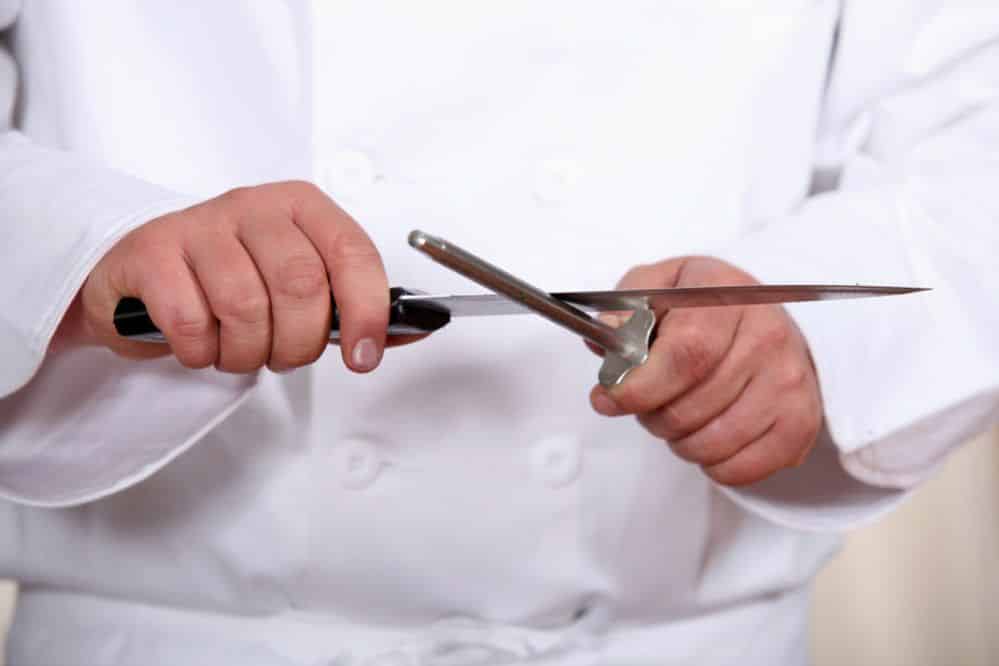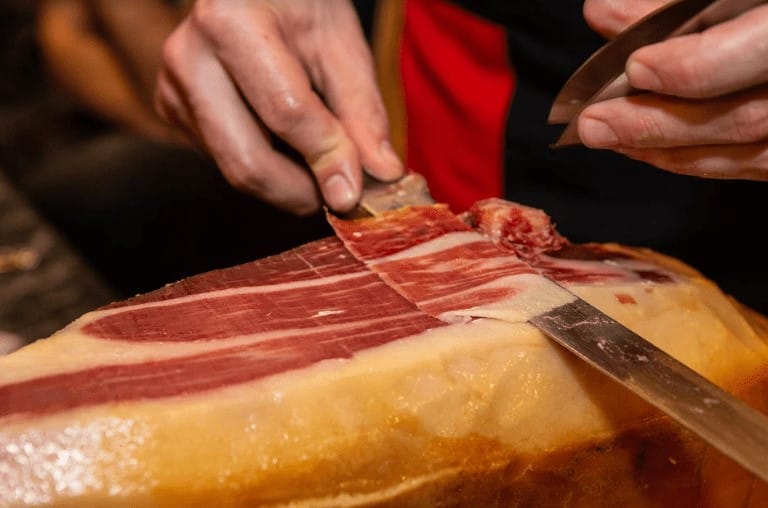
How to serve Jamón/ham?
There's no doubt that Iberian ham is already more than appetizing on its own, but there are several tricks to make its appearance even more enticing and irresistible, so we can't resist savoring a piece of it. One of the most important aspects is "how to plate the ham."
We've all heard and experienced that we eat with our eyes first, but if there's one dish that catches everyone's attention without grand gestures, it's ham.
However, plating ham isn't just about slicing thin pieces and placing them on a plate however one pleases. It's much more than that. You just need a bit of good taste and practice to amaze everyone.
Stay tuned to read the entire blog to discover how!
The Importance of Slicing When Plating Ham
First and foremost, one of the most important aspects to consider when plating Iberian ham is the slicing technique. We need to pay careful attention to this step, as how it's sliced will either attract more attention or less. Sometimes, even a single slice can make your mouth water.
It's important to note that the slicing should be done with the appropriate tools. The utensils we use are of utmost importance to achieve a perfect, well-defined cut without any danger to the cutter. We're talking about a jamonero (ham holder), a jamonero knife, and a boning or paring knife.
 Jamonero and paring knife
Jamonero and paring knife
The perfect cut for plating ham is a very thin slice of about four to five centimeters. Each cut should have a similar shape to achieve symmetry and harmony on the plate.
You're probably wondering how many slices you should put on each plate for an excellent presentation. Well, the perfect amount of slices is 20 to 25 slices per plate, which equates to about 80/100 grams. Of course, you should also consider the proportions of the dish to choose the ideal quantity.
- If you're eager to experience the cutting process and learn how it's done, we recommend visiting the post "How to Slice Ham?" where you'll find step-by-step instructions, the most appropriate instruments, and how to use them correctly in each moment.
 How to Slice Ham?
How to Slice Ham?
The Plate as a Key Component for Plating Ham
Once you've learned how to make the perfect cut for an exquisite ham presentation, you should consider which plate to place the ham slices on.
An essential element to consider is the color of the plate, as it's advisable to use a plate that enhances the intense red of the ham. This creates a high contrast that makes the product stand out more. For this reason, a white plate could be used, for example. Additionally, the plate should have no distracting decorations that might draw attention away from the ham, the star of the show.
The shape of the plate is also crucial in plating. The most recommended shape by experts is round. This shape allows us to arrange the slices in the most elegant manner.
Start the arrangement from the outer edge of the plate toward the center, overlapping the slices. A tip is to orient the fat part of the slice toward the center of the plate; this way, it's easier to pick up the slices when you're ready to savor them, and the plate looks more appealing. Once the plate is set as desired, it's crucial to clean any residual fat or dirt. A clean presentation is the finishing touch to a job well done.

Sliced and perfectly plated ham
The Ideal Temperature for Plating Ham
When we talk about temperature in Iberian ham, we're discussing one of its fundamental aspects for consumption. If we want to fully enjoy the organoleptic characteristics of a piece, we need to consider the temperature at which we're going to taste it. It's also essential to consider the plate's temperature where the ham is placed to achieve a delightful result.
Typically, the ideal temperature for ham before slicing should be between 20 and 25 degrees Celsius, which is usually room temperature. This is when the ham's flavors are released the most. Additionally, an optimal temperature makes slicing easier when using the jamonero knife.
In the same way, it's not just about the temperature of the Iberian ham. It's also important to consider the plate's temperature where the ham slices will be placed. The plate should be at room temperature. This helps maintain the ideal warmth of the ham while keeping it juicy and shiny.
If you have pre-sliced ham packets, you should take them out of the package and ensure the ham is at room temperature. It'll be ready to consume when the slices separate easily without breaking.
Remember that at Enrique Tomás, as ham enthusiasts, we care about everyone appreciating its quality. That's why we've prepared sliced ham packs, a way to enjoy ham with the exact thickness, machine-sliced, or by the best master ham cutters.
Should You Remove the Fat When Plating Ham?
Although many people think otherwise, it's a mistake to believe that we should remove the fat from each ham slice when presenting it on the plate. The reason it shouldn't be removed is because of the great flavor it adds to the ham. Not only that, but it also contributes to the preservation and conservation of the piece.

To wrap up, we encourage you to let your imagination soar and work on your creativity with this high-value gastronomic and nutritional product. This way, you can amaze all your diners.
Feel free to visit our online store and choose yours to start enjoying the art of slicing and plating Iberian ham.
If you have any questions, don't hesitate to contact the customer support team at Enrique Tomás, and we'll do our best to assist you.



